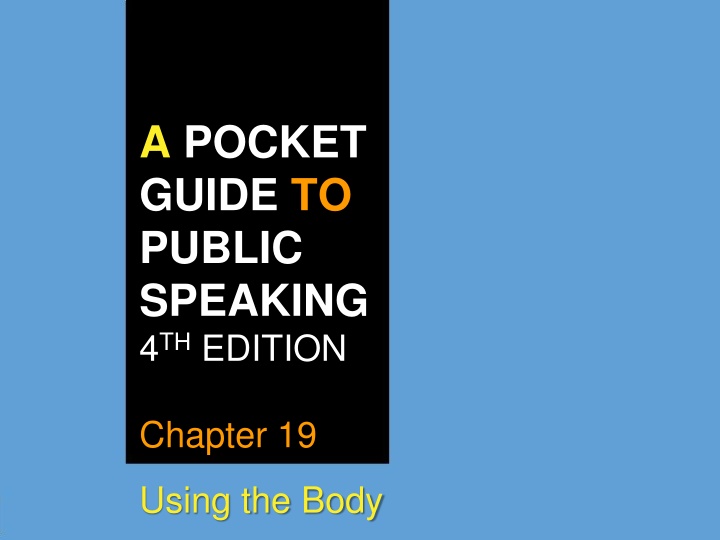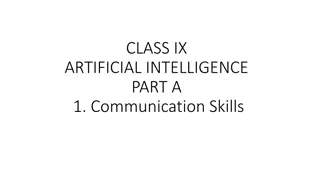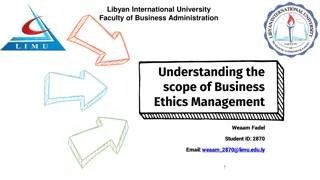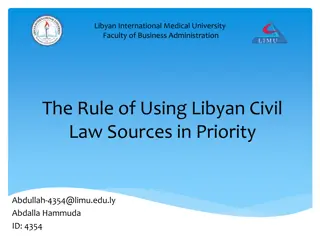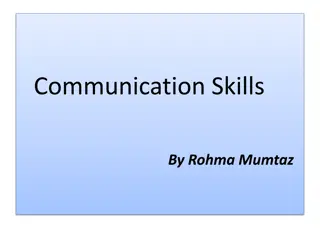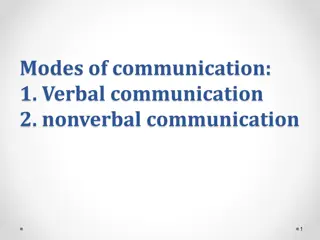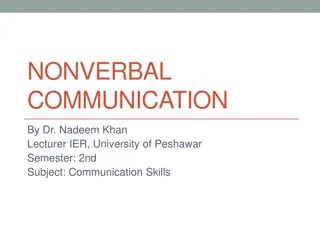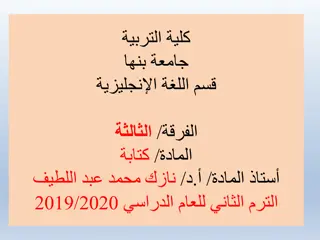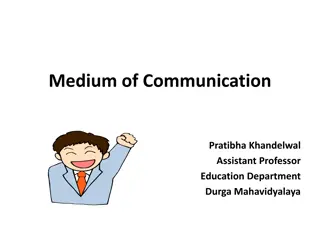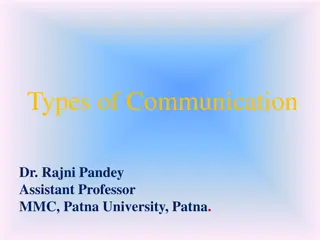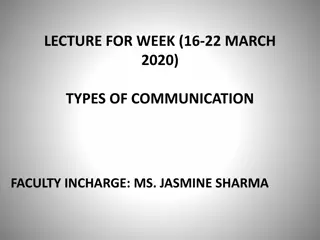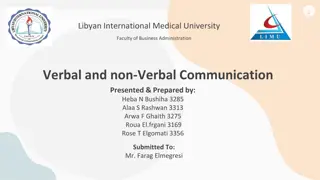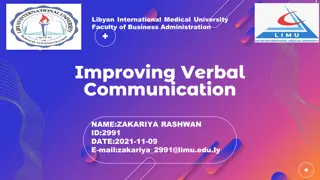Principles of Verbal Messages at Libyan International Medical University
Ideas, feelings, and thoughts communicated verbally are explored in the Principles of Verbal Messages course at the Libyan International Medical University Faculty of Business Administration. Students learn about packaging messages, deciphering meanings, and understanding denotative and connotative interpretations within communication. Enhance your verbal communication skills and unravel the nuances of message delivery with this essential course.
Download Presentation

Please find below an Image/Link to download the presentation.
The content on the website is provided AS IS for your information and personal use only. It may not be sold, licensed, or shared on other websites without obtaining consent from the author.If you encounter any issues during the download, it is possible that the publisher has removed the file from their server.
You are allowed to download the files provided on this website for personal or commercial use, subject to the condition that they are used lawfully. All files are the property of their respective owners.
The content on the website is provided AS IS for your information and personal use only. It may not be sold, licensed, or shared on other websites without obtaining consent from the author.
E N D
Presentation Transcript
A POCKET GUIDE TO PUBLIC SPEAKING 4THEDITION Chapter 19 Using the Body
Pay Attention to Body Language Body language includes Facial expressions; Eye behavior; Gestures; General body movements.
Animate Your Facial Expressions Smiling is a sign of Mutual welcome (start of the speech); Mutual comfort/interest (during the speech); Mutual goodwill (close of the speech). Smiling aids relaxation and improves confidence.
Maintain Eye Contact Most important physical action while speaking Eye contact Maintains the quality of directness; Lets people know they are recognized; Indicates acknowledgement and respect; Shows you consider listeners unique people.
Maintain Eye Contact (cont.) Scanning Technique used with large crowds Move your gaze among listeners. Move your gaze among sections. Pause long enough to complete one thought. Give all sections equal attention.
Use Gestures That Feel Natural Physical gestures Fill in gaps in your message. Illustrate size or shape of objects. Express the depth of an emotion. Should arise from genuine emotions. Should conform to your personality.
Use Gestures That Feel Natural (cont.) Use natural, spontaneous gestures. Avoid exaggerated gestures. Eliminate distracting gestures.
Use Gestures That Feel Natural (cont.) Analyze your gestures for effectiveness. Practice movements that feel natural.
Create a Feeling of Immediacy Nonverbal immediacy Perceived physical and psychological closeness Makes listeners respond more positively Helps listeners to learn more
Create a Feeling of Immediacy (cont.) Keys to establishing immediacy: Enthusiastic vocal delivery Frequent eye contact Animated facial expressions Natural body movements
Dress Appropriately Attire is the first thing audiences notice. Critical criteria for determining appropriate dress: Audience expectations Nature of the speech occasion
Dress Appropriately (cont.) Extension of dress Objects around or on your person Can distract listeners from your message Avoid having unnecessary items: Pens, pencils, excessive papers Large jewelry, briefcases, backpacks
Practice the Delivery Practice is essential to effective delivery. More practice leads to greater comfort. Practice with a fully-developed outline. Focus on the message. Plan ahead and practice often.
Practice the Delivery (cont.) Practice with your speaking notes. Revise unsatisfactory parts of your speech. Alter your notes as you go. Focus on your speech ideas. Time each part of your speech.
Practice the Delivery (cont.) Practice with your presentation aids. Record yourself with a tape recorder. Videotape yourself twice (if possible). Once after several practice sessions Again after incorporating any changes
Practice the Delivery (cont.) Visualize the speech setting. Practice under realistic conditions. Project your voice, filling the room.
Practice the Delivery (cont.) Practice with at least one volunteer. Seek constructive criticism Schedule your practice sessions early on. Gives you time to prepare and revise
